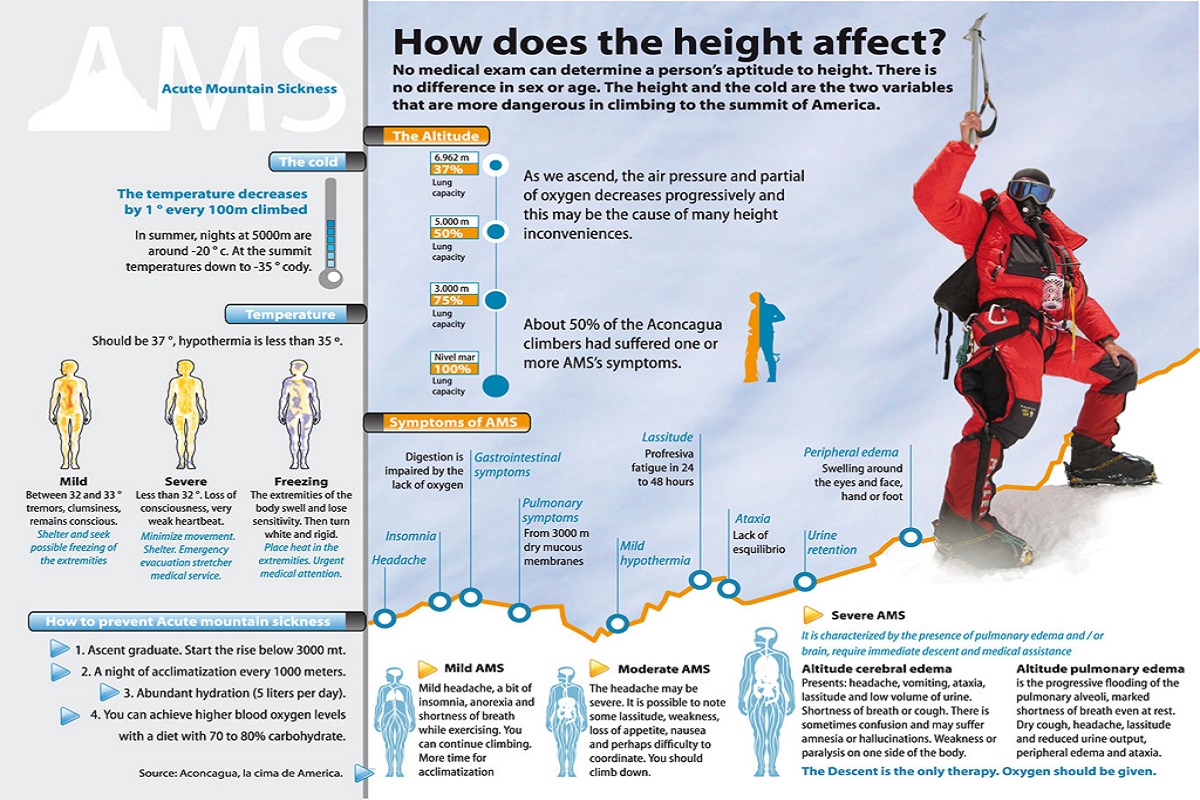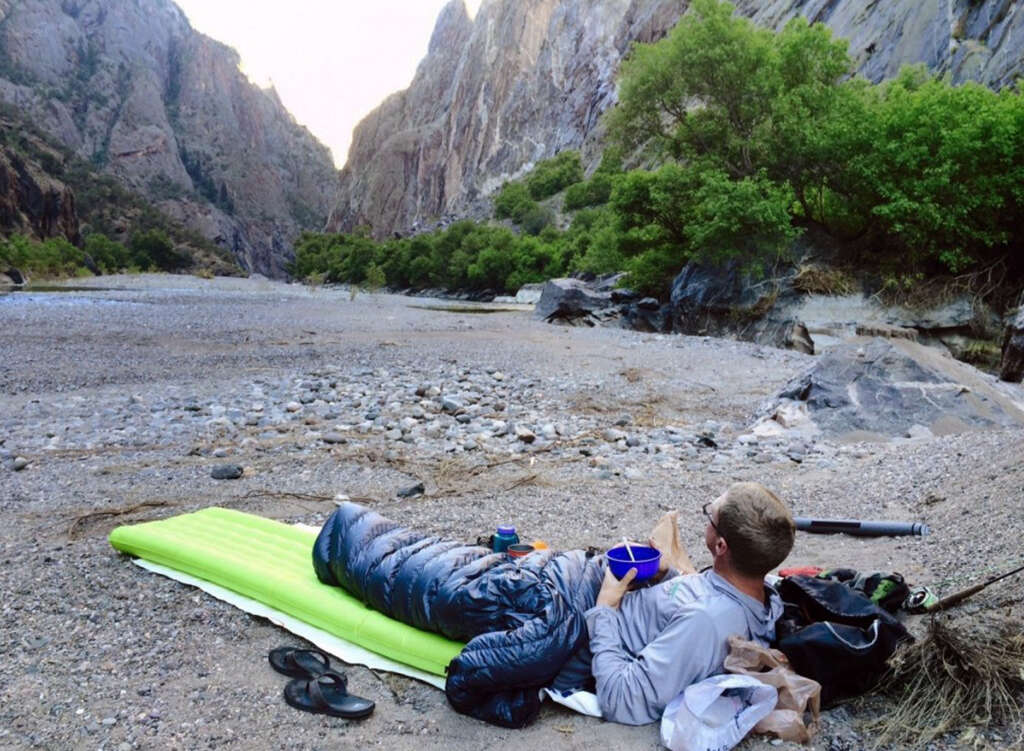

Treatment is aimed at decreasing pain and preventing infection while the corneal epithelium heals. Wearing ultraviolet-protectant sunglasses with large lenses and side shields is recommended when traveling in snowy conditions at high altitudes. Ultraviolet keratitis (snow blindness), which results from corneal epithelial injury from ultraviolet radiation exposure, is another common condition at high altitudes, and may be disabling. 38 Although usually asymptomatic, it may be associated with other altitude-related illnesses and may predict acute mountain sickness and high-altitude cerebral and pulmonary edema. High-altitude retinopathy is a common, typically benign condition that is thought to be caused by increased retinal blood flow in response to hypoxic conditions at altitudes above 16,400 ft (5,000 m). 6, 7, 12 High-altitude cerebral edema can progress in a matter of hours from mild ataxia to coma and death. 4, 12 High-altitude cerebral edema is considered end-stage acute mountain sickness and is defined by ataxia (as assessed by heel-to-toe walking) or altered mental status, usually in a person with acute mountain sickness. Symptoms of acute mountain sickness typically occur within six to 12 hours of gaining altitude, and range from mild with spontaneous resolution (especially at altitudes less than 11,400 ft ) to severe with progression to high-altitude cerebral edema. 12 The key criteria, however, are a recent gain in altitude and (although not specifically stated) the absence of other causes of the symptoms. These symptoms can easily be misinterpreted as a viral illness. Symptoms of acute mountain sickness and early high-altitude cerebral edema include headache and at least one of the following: anorexia, nausea or vomiting, dizziness or lightheadedness, difficulty sleeping, and fatigue or weakness. Uncontrolled congestive heart failure, severe chronic obstructive pulmonary disease, and pulmonary hypertension are contraindications to altitude exposure.Īctivity restriction at high altitudes is not necessary in patients with stable coronary artery disease. Prophylaxis with salmeterol (Serevent), nifedipine (Procardia), dexamethasone, or phosphodiesterase-5 inhibitors (tadalafil, sildenafil ) may reduce the incidence of high-altitude pulmonary edema.
#SYMPTOMS OF ALTITUDE SICKNESS PORTABLE#
If descent is not possible, supplemental oxygen, rest, and placement in a portable hyperbaric oxygen chamber may stabilize patients. Medications for prevention and treatment of acute mountain sickness and high-altitude cerebral edema include acetazolamide and dexamethasone.ĭescent is mandatory in persons with high-altitude cerebral or pulmonary edema. Slow ascent is the most effective method to prevent altitude illness.

Medical management is prudent in these patients. Patients with stable coronary and pulmonary disease may travel to high altitudes but are at risk of exacerbation of these illnesses. Descent is mandatory for all persons with high-altitude cerebral or pulmonary edema. If this is not possible, or if symptoms occur despite slow ascent, acetazolamide or dexamethasone may be used for prophylaxis or treatment of acute mountain sickness. Slow ascent is the most important measure to prevent the onset of altitude illness. It may appear in otherwise healthy persons and may progress rapidly with cough, dyspnea, and frothy sputum. High-altitude pulmonary edema is uncommon, but is the leading cause of altitude illness–related death. Onset is heralded by worsening symptoms of acute mountain sickness, progressing to ataxia and eventually to coma and death if not treated. It may progress to high-altitude cerebral edema in some persons. Acute mountain sickness is the most common presentation of altitude illness and typically causes headache and malaise within six to 12 hours of gaining altitude. Altitude illness affects 25 to 85 percent of travelers to high altitudes, depending on their rate of ascent, home altitude, individual susceptibility, and other risk factors.


 0 kommentar(er)
0 kommentar(er)
